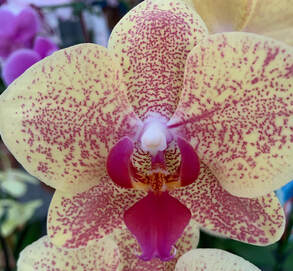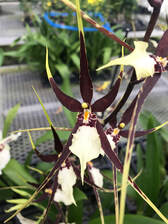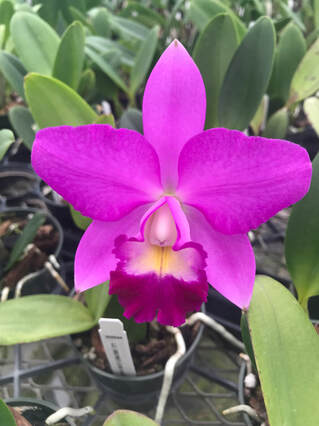|
Better-GroOrchidBlog
 Phal. KV Charmer "KV5702" Phal. KV Charmer "KV5702" As orchid growers, we are often asked the question, “My orchid seems to be growing well and it looks healthy, but I have not been able to get it to bloom again. Why is this?” The answer is often a simple modification to the amount of light and/or a change in temperature to kick start a blooming cycle. Not all orchids have the same cultural requirements, so it is important to first identify the type of orchid you have – this is essential!  Mtssa. Kauai's Choice 'Tropical Fragrance' AM/AOS Mtssa. Kauai's Choice 'Tropical Fragrance' AM/AOS Refer to these web pages for care guidance for your specific type of orchid: Cattleya, Dendrobium, Oncidium, Paphiopedilum, Phalaenopsis, and Vanda. Here you will find light, temperature, humidity and feeding guidance. In addition to making slight modifications to your orchids environment, it's important to note that all orchid growers need patience. Most orchids bloom seasonally or just annually. This is because there are certain temperature and/or light changes that occur during the year that trigger flowering. Plants need specific amounts of light each day to be able to convert food (fertilizer) and water into energy. This energy is then used to power the processes required for the plant to grow and bloom.  Cattleya Secret Love Angel Cattleya Secret Love Angel Light If your plant is receiving adequate water and food (the plant looks lush and healthy, leaves are a nice dark green) but does not flower or only produces a few flowers, then chances are it is not getting enough light. You should try to gradually increase the amount of light your plant is receiving (leaves should be a medium-green). For simplicity sake, light requirements can be divided into four levels:
Don't Forget Night Some Cattleyas initiate spikes in response to the longer, uninterrupted nights of winter. Therefore, all else being equal, they will only flower when they receive the adequate amount of night hours (although this can vary significantly between Cattleya species). Temperature Temperature plays an important role in flowering. Most standard Phalaenopsis for example, require cooler nights and days (60-75 °F) to initiate spikes. These cooler temps not only initiate the Phalaenopsis spike, but can also influence the number of flowers produced on that spike. This is why in our area of the south Phalaenopsis plants bloom primarily from winter to spring. This may differ if you are located in the north. On the other hand, many Dendrobiums like it hot, so they will typically flower from mid-summer to fall. We hope these tips bring about the ultimate reward of a re-blooming orchid. For more information visit EasyOrchidGrowing.com and be sure to watch our Orchid Care videos. Happy Blooming! Comments are closed.
|
Resources
|
Company |
|
